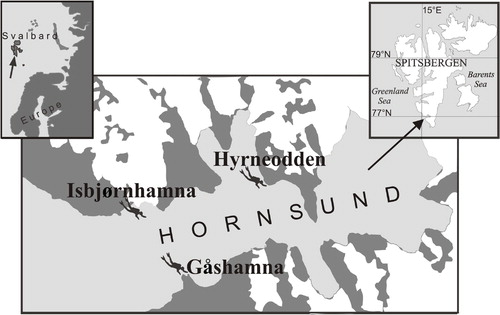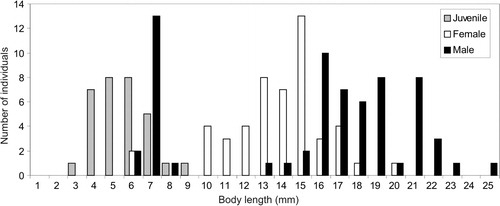Figures & data
Table 1 Mean abundance of Caprella septentrionalis per algal sample with minimum and maximum values in brackets at different sites (N, number of algae collected; F, frequency of caprellid occurrence on algal hosts). The frequency of occurrence (F) was estimated as the percentage of algal samples in which Caprella occurred in the total number of algae collected.


